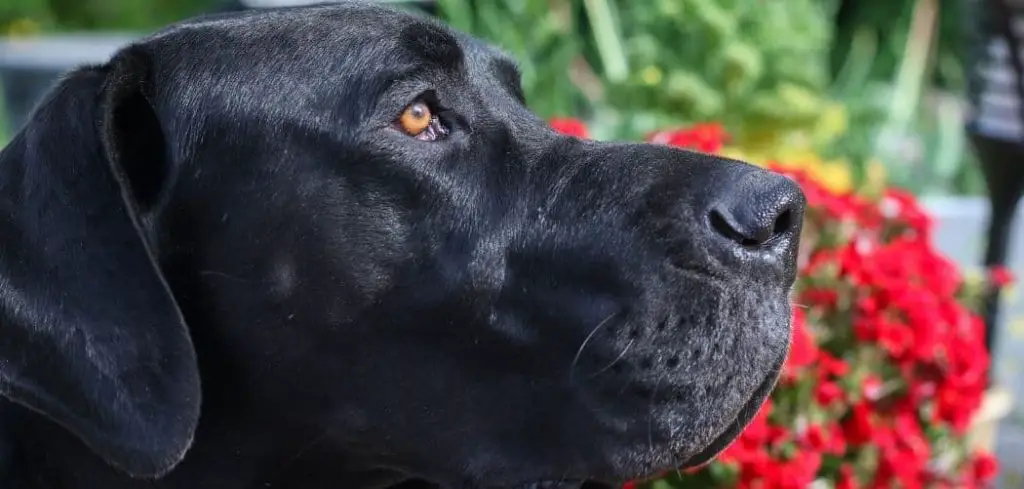Panting and moaning in dogs can be alarming, as these behaviors often indicate discomfort. While occasional moaning or panting may occur after exercise, persistent or unusual patterns are often a sign of an underlying issue.
We outline the common causes of panting and moaning in dogs, what you can do at home, and when to seek veterinary help.
Dog Panting and Moaning — Why It Happens
When a dog pants and makes moaning sounds, it’s usually a sign of discomfort or pain. Dogs may vocalize if they’re struggling with arthritis, injury, or internal issues like bloating or heart problems. Stress and anxiety can also cause moaning paired with panting.

Dog Panting and Moaning: Common Causes
Pain or Injury
Pain is one of the most common reasons dogs pant and moan. Dogs may vocalize discomfort when they have an injury, arthritis, or internal pain. Panting often accompanies moaning because the dog is stressed or physically strained.
Look for additional signs such as limping, stiffness, reluctance to move, or sensitivity when touched.
Untreated pain can worsen over time and affect your dog’s quality of life, so timely veterinary evaluation is essential.
Read more: Dog Panting and Crying After Surgery (Here’s why)
Heatstroke or Overheating
Overheating can cause both panting and moaning. When dogs are exposed to high temperatures or overexert themselves, they pant excessively to regulate body heat.
Moaning or whining may occur as a response to discomfort or stress caused by overheating.
Symptoms include bright red gums, rapid heartbeat, lethargy, dizziness, and collapse. Immediate cooling and veterinary attention are critical to prevent organ damage.
Anxiety or Stress
Emotional distress can manifest as panting and moaning. Dogs may vocalize when they feel anxious, fearful, or stressed.
Situations like thunderstorms, separation, or environmental changes can trigger this behavior.
Accompanying signs include pacing, trembling, restlessness, whining, or hiding. Addressing triggers, providing calming aids, and maintaining a predictable routine can help reduce stress-induced panting and moaning.
Digestive Upset or Nausea
Nausea often leads to panting and vocalization. Dogs experiencing digestive discomfort may pant heavily and moan as a way of expressing unease.
This can be triggered by dietary indiscretion, food intolerance, or gastrointestinal illness.
Additional signs include vomiting, diarrhea, decreased appetite, or frequent swallowing. Prompt attention to diet and monitoring for persistent symptoms can prevent further complications.
Respiratory or Cardiac Issues
Panting and moaning may signal heart or lung problems. Dogs with respiratory distress, heart disease, or fluid in the lungs often pant to meet oxygen needs.
Moaning can occur due to shortness of breath, discomfort, or anxiety caused by these conditions.
Other indicators include coughing, labored breathing, fatigue, or fainting. These conditions require immediate veterinary evaluation to prevent life-threatening complications.
Neurological Disorders
Neurological issues can cause unusual vocalization and panting. Conditions affecting the brain or spinal cord may lead to moaning, restlessness, or abnormal breathing patterns.
Signs can include disorientation, tremors, seizures, weakness, or loss of coordination. Early detection and treatment can help manage symptoms and improve the dog’s quality of life.
What to Do If Your Dog Is Panting and Moaning
Ensure your dog is comfortable and safe. Remove access to heat sources and provide a cool, quiet environment if overheating or stress is suspected.
Observe for patterns and triggers. Note when moaning and panting occur, what activities precede it, and any accompanying symptoms. This information can help your veterinarian diagnose the issue.
Address potential pain. Gentle handling and limiting strenuous activity can prevent exacerbating injuries or discomfort. Consider scheduling a veterinary examination for a proper pain assessment.
Monitor digestive health. Avoid sudden dietary changes and ensure access to fresh water. Track any episodes of vomiting, diarrhea, or unusual bowel movements.
Reduce stress and anxiety. Calm reassurance, consistent routines, and environmental enrichment can reduce stress-induced panting and moaning. Pheromone diffusers or anxiety wraps may also help.
When to Call or Visit Your Vet
Seek immediate veterinary attention if your dog shows:
Persistent or worsening panting and moaning without an obvious cause
Signs of severe pain, injury, or neurological issues
Vomiting, diarrhea, lethargy, or weakness
Labored breathing, coughing, or rapid heartbeat
Sudden behavioral changes, disorientation, or tremors
Early evaluation ensures timely intervention and prevents potentially serious complications.
Read more: Dog Panting and Groaning (Causes explained)
Key Takeaway
Panting and moaning in dogs can indicate pain, stress, heat-related issues, digestive upset, or serious medical conditions.
Observing your dog’s behavior, providing comfort, addressing potential pain or discomfort, and consulting a veterinarian when necessary are key to ensuring your dog’s safety and wellbeing.
Timely attention can relieve distress and improve your dog’s quality of life.
